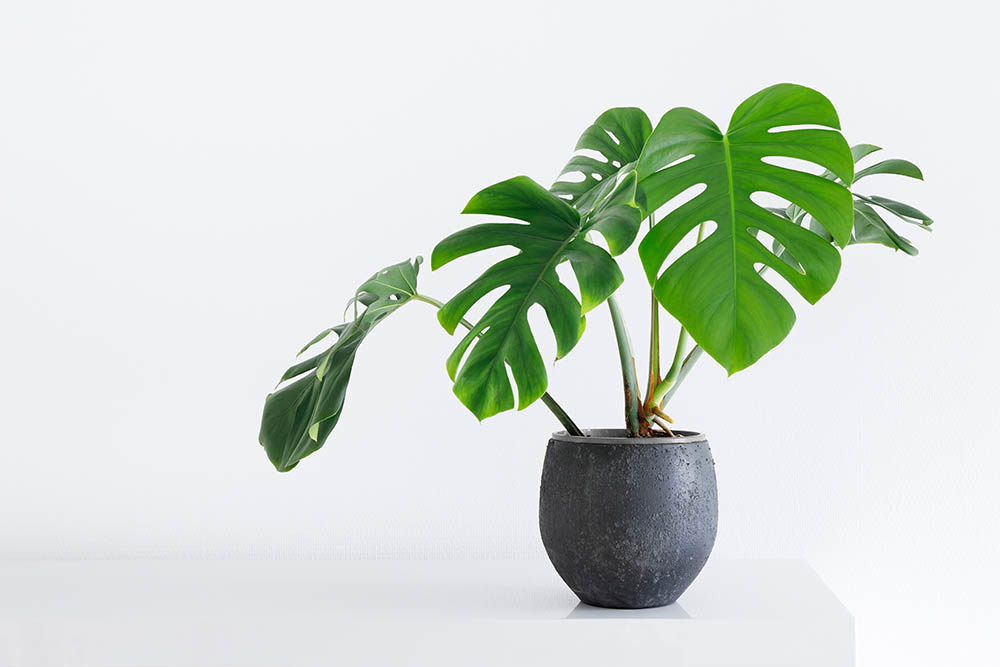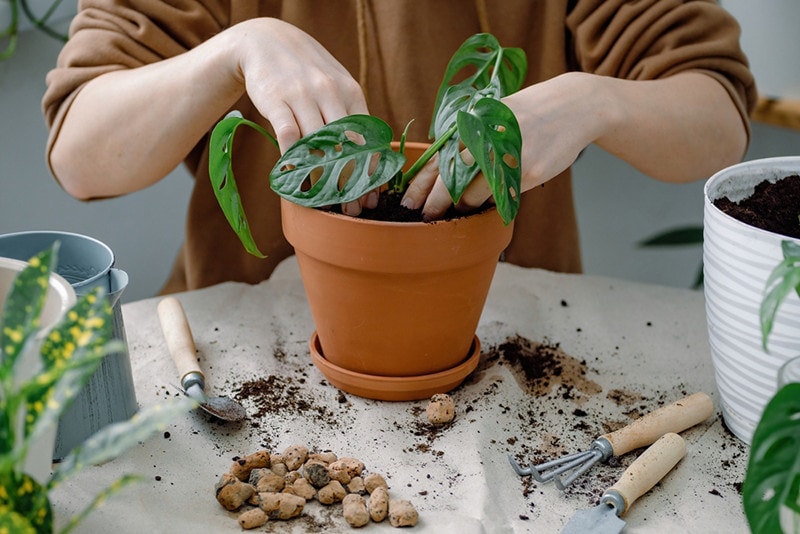Does Monstera Like To Be Root Bound? Repotting & Growing Tips
-
Greg Iacono
- Last updated:

If there’s one thing about the lovely Monstera plant that you need to know, it’s that it grows very fast, especially when younger. While they can handle a snug pot, Monsteras prefer to have extra room. They do well with a bit more soil than most plants, which helps the Monstera hold water, absorb vital nutrients, and grow even faster. Most plant experts re-pot their Monstera plants about every 2 years so that they don’t become root bound.
You might have more questions about caring for these beautiful plants. What does it mean to be root bound, for example, and should you loosen a Monstera’s roots when repotting it? Read on to keep your Monstera looking marvelous all year long.
How Do You Know When Your Monstera Needs to be Repotted?
Knowing that Monstera doesn’t like to be root-bound means you need to know the signs they should be repotted so you can prevent it. Below are several signs that it’s time to put your Monstera in a bigger pot.
Your Monstera Has Stopped Growing
One of the signs that your Monstera needs to be repotted is that its growth slows considerably or stops altogether. Even in the best conditions, a root-bound Monstera won’t grow because its roots are too close together and can’t get enough water.
The Potting Mix in Your Monstera’s Pot Is Drying Out Very Fast
When there are several roots in a small pot, any water you give your Monstera will be gone quickly. If you notice that the soil around your plant is drying out too fast, it’s time to repot your Monstera.
Roots Are Growing Out of the Pot’s Drain Holes
If you see roots growing out of the drainage holes at the bottom of your plant’s pot, it’s time to put it in a bigger pot.

Dried-out Yellow and Brown Leaves Are Appearing on Your Monstera
A root-bound Monstera is not a happy plant and will eventually die. Before that happens, however, you’ll see yellow and brown leaves appear, which will be crispy because they’re dried out. That’s because a root-bound plant’s roots can’t absorb water well. If you start seeing yellow and brown leaves, check your Monstera’s soil and root ball and, if needed, repot it.
It’s Over 3 Years Since You’ve Repotted Your Monstera
No matter what signs you’re seeing, if it’s been over 3 years since you’ve repotted your Monstera, it’s time to do it again. The longer you wait, the bigger the chance your precious plant will suffer.
Should You Loosen and Break Up Monstera Roots when Repotting?
As we’ve seen, a root-bound Monstera plant can’t get enough water via its roots and will start to die. Loosening and breaking up your Monstera plant’s roots is a good idea so that the roots are looser and can absorb water in their new pot. Even better, cut away about ⅓ of the plant’s roots. This will provide plenty of room for them in the new pot and help your Monstera become lush and thick.
Do Monstera Plants Like to Be Crowded?
Your typical Monstera plant doesn’t like to be crowded with other plants, even with other Monstera in the wild, Monstera are massive plants that can grow to over 50 feet high and have leaves that are as long as 2 feet! In other words, a Monstera plant needs a lot of space to grow.

Do Monsteras Like Deep or Shallow Pots?
Monstera plants like it when their roots stay moist but not wet, which means a smaller, more shallow pot is best, no matter what size your plant might be. In a pot that’s too large, the water won’t be absorbed fast enough by the Monstera’s roots. If they sit too long in wet soil, the roots will start to rot, which is never good for any plant. A shallow, small pot is best for your Monstera, and as it grows, a slightly bigger pot is recommended over a large pot each time.
Do Monstera Plants Like Tap Water?
Like most plants, a Monstera can be negatively affected by chemicals in your home’s tap water, especially chlorine. If you give them tap water with chlorine, the chemical will build up in the soil and make it difficult for your plant to absorb the nutrients it needs to thrive. For these reasons, using distilled water on your Monstera is best. If you don’t want to do that, let your tap water sit out overnight. This allows the chlorine to evaporate, eliminating the problem. Also, use the water at room temperature, so you don’t shock your Monstera’s roots.
How Much Light do Monstera Plants Need?
As we mentioned at the beginning of this article, Monstera plants are one of the easiest to care for and will thrive under many conditions. One of these conditions is low light since they don’t like the full sun. Still, plants love and need light, so below are a few things to help you find the perfect spot to place your Monstera to ensure it gets enough of the sun’s vitalizing rays.
- Place your Monstera near a window that faces east.
- Place your plant near a window with sheer curtains letting in light but not direct sunlight.
- A west-facing window without curtains is an excellent choice for a Monstera.
How to Repot a Monstera Plant in 6 Easy Steps
If it’s time to repot your Monstera plant, the six steps below will make short work out of the process.
- 1. Prepare the new pot with soil and anything else your Monstera needs to thrive.
- 2. Remove the Monstera from its old pot. Be gentle and take your time, so you don’t hurt your plant.
- 3. Loosen the Monstera’s roots. This is vital if your Monstera was root bound.
- 4. Trim away about ⅓ of the roots. This will help your Monstera thrive and become fuller.
- 5. Repot the plant in its new pot. A pot that’s about 20% bigger than the previous one should be just fine.
- 6. Water thoroughly.

Final Thoughts
Monstera plants do not like crowded roots or being root bound in their pots. They need plenty of room to grow and absorb water, but not too much room. A pot about 20% bigger than the root ball will do the trick. You’ll need to repot your Monstera in about 2 years, to keep it healthy and encourage growth. We hope the information today answered all your questions about whether Monsteras like to be root bound.
Featured Image Credit: dropStock, Shutterstock
Contents
